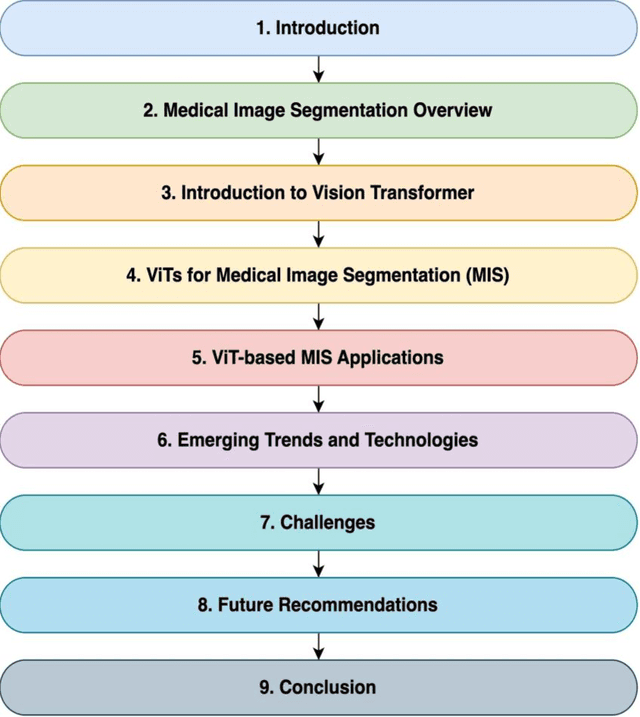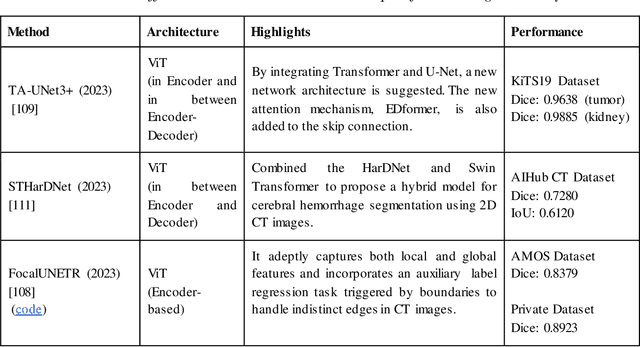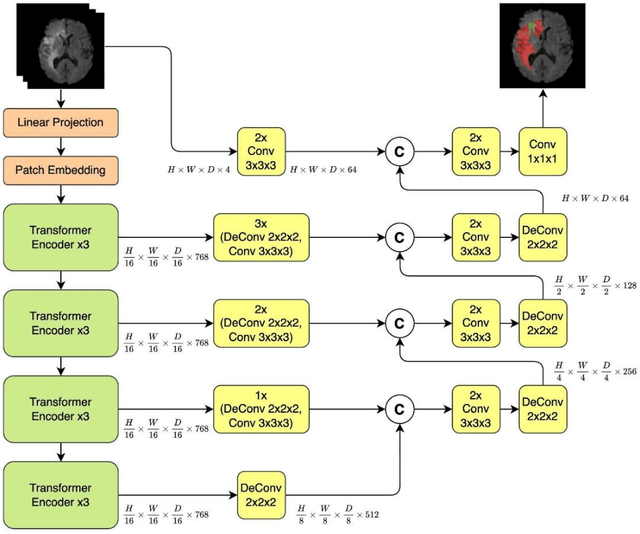Saddam Hussain Khan
Artificial Intelligence Lab, Department of Computer Systems Engineering, University of Engineering and Applied Sciences
A Comprehensive Survey on Architectural Advances in Deep CNNs: Challenges, Applications, and Emerging Research Directions
Mar 19, 2025Abstract:Deep Convolutional Neural Networks (CNNs) have significantly advanced deep learning, driving breakthroughs in computer vision, natural language processing, medical diagnosis, object detection, and speech recognition. Architectural innovations including 1D, 2D, and 3D convolutional models, dilated and grouped convolutions, depthwise separable convolutions, and attention mechanisms address domain-specific challenges and enhance feature representation and computational efficiency. Structural refinements such as spatial-channel exploitation, multi-path design, and feature-map enhancement contribute to robust hierarchical feature extraction and improved generalization, particularly through transfer learning. Efficient preprocessing strategies, including Fourier transforms, structured transforms, low-precision computation, and weight compression, optimize inference speed and facilitate deployment in resource-constrained environments. This survey presents a unified taxonomy that classifies CNN architectures based on spatial exploitation, multi-path structures, depth, width, dimensionality expansion, channel boosting, and attention mechanisms. It systematically reviews CNN applications in face recognition, pose estimation, action recognition, text classification, statistical language modeling, disease diagnosis, radiological analysis, cryptocurrency sentiment prediction, 1D data processing, video analysis, and speech recognition. In addition to consolidating architectural advancements, the review highlights emerging learning paradigms such as few-shot, zero-shot, weakly supervised, federated learning frameworks and future research directions include hybrid CNN-transformer models, vision-language integration, generative learning, etc. This review provides a comprehensive perspective on CNN's evolution from 2015 to 2025, outlining key innovations, challenges, and opportunities.
A Novel Channel Boosted Residual CNN-Transformer with Regional-Boundary Learning for Breast Cancer Detection
Mar 19, 2025Abstract:Recent advancements in detecting tumors using deep learning on breast ultrasound images (BUSI) have demonstrated significant success. Deep CNNs and vision-transformers (ViTs) have demonstrated individually promising initial performance. However, challenges related to model complexity and contrast, texture, and tumor morphology variations introduce uncertainties that hinder the effectiveness of current methods. This study introduces a novel hybrid framework, CB-Res-RBCMT, combining customized residual CNNs and new ViT components for detailed BUSI cancer analysis. The proposed RBCMT uses stem convolution blocks with CNN Meet Transformer (CMT) blocks, followed by new Regional and boundary (RB) feature extraction operations for capturing contrast and morphological variations. Moreover, the CMT block incorporates global contextual interactions through multi-head attention, enhancing computational efficiency with a lightweight design. Additionally, the customized inverse residual and stem CNNs within the CMT effectively extract local texture information and handle vanishing gradients. Finally, the new channel-boosted (CB) strategy enriches the feature diversity of the limited dataset by combining the original RBCMT channels with transfer learning-based residual CNN-generated maps. These diverse channels are processed through a spatial attention block for optimal pixel selection, reducing redundancy and improving the discrimination of minor contrast and texture variations. The proposed CB-Res-RBCMT achieves an F1-score of 95.57%, accuracy of 95.63%, sensitivity of 96.42%, and precision of 94.79% on the standard harmonized stringent BUSI dataset, outperforming existing ViT and CNN methods. These results demonstrate the versatility of our integrated CNN-Transformer framework in capturing diverse features and delivering superior performance in BUSI cancer diagnosis.
RS-FME-SwinT: A Novel Feature Map Enhancement Framework Integrating Customized SwinT with Residual and Spatial CNN for Monkeypox Diagnosis
Oct 02, 2024Abstract:Monkeypox (MPox) has emerged as a significant global concern, with cases steadily increasing daily. Conventional detection methods, including polymerase chain reaction (PCR) and manual examination, exhibit challenges of low sensitivity, high cost, and substantial workload. Therefore, deep learning offers an automated solution; however, the datasets include data scarcity, texture, contrast, inter-intra class variability, and similarities with other skin infectious diseases. In this regard, a novel hybrid approach is proposed that integrates the learning capacity of Residual Learning and Spatial Exploitation Convolutional Neural Network (CNN) with a customized Swin Transformer (RS-FME-SwinT) to capture multi-scale global and local correlated features for MPox diagnosis. The proposed RS-FME-SwinT technique employs a transfer learning-based feature map enhancement (FME) technique, integrating the customized SwinT for global information capture, residual blocks for texture extraction, and spatial blocks for local contrast variations. Moreover, incorporating new inverse residual blocks within the proposed SwinT effectively captures local patterns and mitigates vanishing gradients. The proposed RS-FME-SwinT has strong learning potential of diverse features that systematically reduce intra-class MPox variation and enable precise discrimination from other skin diseases. Finally, the proposed RS-FME-SwinT is a holdout cross-validated on a diverse MPox dataset and achieved outperformance on state-of-the-art CNNs and ViTs. The proposed RS-FME-SwinT demonstrates commendable results of an accuracy of 97.80%, sensitivity of 96.82%, precision of 98.06%, and an F-score of 97.44% in MPox detection. The RS-FME-SwinT could be a valuable tool for healthcare practitioners, enabling prompt and accurate MPox diagnosis and contributing significantly to mitigation efforts.
A Recent Survey of Vision Transformers for Medical Image Segmentation
Dec 01, 2023



Abstract:Medical image segmentation plays a crucial role in various healthcare applications, enabling accurate diagnosis, treatment planning, and disease monitoring. In recent years, Vision Transformers (ViTs) have emerged as a promising technique for addressing the challenges in medical image segmentation. In medical images, structures are usually highly interconnected and globally distributed. ViTs utilize their multi-scale attention mechanism to model the long-range relationships in the images. However, they do lack image-related inductive bias and translational invariance, potentially impacting their performance. Recently, researchers have come up with various ViT-based approaches that incorporate CNNs in their architectures, known as Hybrid Vision Transformers (HVTs) to capture local correlation in addition to the global information in the images. This survey paper provides a detailed review of the recent advancements in ViTs and HVTs for medical image segmentation. Along with the categorization of ViT and HVT-based medical image segmentation approaches we also present a detailed overview of their real-time applications in several medical image modalities. This survey may serve as a valuable resource for researchers, healthcare practitioners, and students in understanding the state-of-the-art approaches for ViT-based medical image segmentation.
A Recent Survey of the Advancements in Deep Learning Techniques for Monkeypox Disease Detection
Nov 06, 2023Abstract:Monkeypox is a zoonotic infectious disease induced by the Monkeypox virus, part of the poxviridae orthopoxvirus group initially discovered in Africa and gained global attention in mid-2022 with cases reported outside endemic areas. Symptoms include headaches, chills, fever, smallpox, measles, and chickenpox-like skin manifestations and the WHO officially announced monkeypox as a global public health pandemic, in July-2022. Timely diagnosis is imperative for assessing disease severity, conducting clinical evaluations, and determining suitable treatment plans. Traditionally, PCR testing of skin lesions is considered a benchmark for the primary diagnosis by WHO, with symptom management as the primary treatment and antiviral drugs like tecovirimat for severe cases. However, manual analysis within hospitals poses a substantial challenge during public health emergencies, particularly in the case of epidemics and pandemics. Therefore, this survey paper provides an extensive and efficient analysis of deep learning (DL) methods for the automatic detection of MP in skin lesion images. These DL techniques are broadly grouped into categories, including deep CNN, Deep CNNs ensemble, deep hybrid learning, the newly developed, and Vision transformer for diagnosing MP. Additionally, the paper addresses benchmark datasets and their collection from various authentic sources, pre-processing techniques, and evaluation metrics. The survey also briefly delves into emerging concepts, identifies research gaps, limitations, and applications, and outlines challenges in the diagnosis process. This survey furnishes valuable insights into the prospective areas of DL study and is anticipated to serve as a path for researchers.
COVID-19 Infection Analysis Framework using Novel Boosted CNNs and Radiological Images
Feb 06, 2023Abstract:COVID-19 is a new pathogen that first appeared in the human population at the end of 2019, and it can lead to novel variants of pneumonia after infection. COVID-19 is a rapidly spreading infectious disease that infects humans faster. Therefore, efficient diagnostic systems may accurately identify infected patients and thus help control their spread. In this regard, a new two-stage analysis framework is developed to analyze minute irregularities of COVID-19 infection. A novel detection Convolutional Neural Network (CNN), STM-BRNet, is developed that incorporates the Split-Transform-Merge (STM) block and channel boosting (CB) to identify COVID-19 infected CT slices in the first stage. Each STM block extracts boundary and region-smoothing-specific features for COVID-19 infection detection. Moreover, the various boosted channels are obtained by introducing the new CB and Transfer Learning (TL) concept in STM blocks to capture small illumination and texture variations of COVID-19-specific images. The COVID-19 CTs are provided with new SA-CB-BRSeg segmentation CNN for delineating infection in images in the second stage. SA-CB-BRSeg methodically utilized smoothening and heterogeneous operations in the encoder and decoder to capture simultaneously COVID-19 specific patterns that are region homogeneity, texture variation, and boundaries. Additionally, the new CB concept is introduced in the decoder of SA-CB-BRSeg by combining additional channels using TL to learn the low contrast region. The proposed STM-BRNet and SA-CB-BRSeg yield considerable achievement in accuracy: 98.01 %, Recall: 98.12%, F-score: 98.11%, and Dice Similarity: 96.396%, IOU: 98.845 % for the COVID-19 infectious region, respectively. The proposed two-stage framework significantly increased performance compared to single-phase and other reported systems and reduced the burden on the radiologists.
A New Deep Boosted CNN and Ensemble Learning based IoT Malware Detection
Dec 17, 2022Abstract:Security issues are threatened in various types of networks, especially in the Internet of Things (IoT) environment that requires early detection. IoT is the network of real-time devices like home automation systems and can be controlled by open-source android devices, which can be an open ground for attackers. Attackers can access the network, initiate a different kind of security breach, and compromises network control. Therefore, timely detecting the increasing number of sophisticated malware attacks is the challenge to ensure the credibility of network protection. In this regard, we have developed a new malware detection framework, Deep Squeezed-Boosted and Ensemble Learning (DSBEL), comprised of novel Squeezed-Boosted Boundary-Region Split-Transform-Merge (SB-BR-STM) CNN and ensemble learning. The proposed S.T.M. block employs multi-path dilated convolutional, Boundary, and regional operations to capture the homogenous and heterogeneous global malicious patterns. Moreover, diverse feature maps are achieved using transfer learning and multi-path-based squeezing and boosting at initial and final levels to learn minute pattern variations. Finally, the boosted discriminative features are extracted from the developed deep SB-BR-STM CNN and provided to the ensemble classifiers (SVM, M.L.P., and AdaboostM1) to improve the hybrid learning generalization. The performance analysis of the proposed DSBEL framework and SB-BR-STM CNN against the existing techniques have been evaluated by the IOT_Malware dataset on standard performance measures. Evaluation results show progressive performance as 98.50% accuracy, 97.12% F1-Score, 91.91% MCC, 95.97 % Recall, and 98.42 % Precision. The proposed malware analysis framework is helpful for the timely detection of malicious activity and suggests future strategies.
Malaria Parasitic Detection using a New Deep Boosted and Ensemble Learning Framework
Dec 10, 2022Abstract:Malaria is a potentially fatal plasmodium parasite injected by female anopheles mosquitoes that infect red blood cells and millions worldwide yearly. However, specialists' manual screening in clinical practice is laborious and prone to error. Therefore, a novel Deep Boosted and Ensemble Learning (DBEL) framework, comprising the stacking of new Boosted-BR-STM convolutional neural networks (CNN) and the ensemble ML classifiers, is developed to screen malaria parasite images. The proposed Boosted-BR-STM is based on a new dilated-convolutional block-based split transform merge (STM) and feature-map Squeezing-Boosting (SB) ideas. Moreover, the new STM block uses regional and boundary operations to learn the malaria parasite's homogeneity, heterogeneity, and boundary with patterns. Furthermore, the diverse boosted channels are attained by employing Transfer Learning-based new feature-map SB in STM blocks at the abstract, medium, and conclusion levels to learn minute intensity and texture variation of the parasitic pattern. The proposed DBEL framework implicates the stacking of prominent and diverse boosted channels and provides the generated discriminative features of the developed Boosted-BR-STM to the ensemble of ML classifiers. The proposed framework improves the discrimination ability and generalization of ensemble learning. Moreover, the deep feature spaces of the developed Boosted-BR-STM and customized CNNs are fed into ML classifiers for comparative analysis. The proposed DBEL framework outperforms the existing techniques on the NIH malaria dataset that are enhanced using discrete wavelet transform to enrich feature space. The proposed DBEL framework achieved Accuracy (98.50%), Sensitivity (0.9920), F-score (0.9850), and AUC (0.997), which suggest it to be utilized for malaria parasite screening.
Brain Tumor MRI Classification using a Novel Deep Residual and Regional CNN
Dec 10, 2022Abstract:Brain tumor classification is crucial for clinical analysis and an effective treatment plan to cure patients. Deep learning models help radiologists to accurately and efficiently analyze tumors without manual intervention. However, brain tumor analysis is challenging because of its complex structure, texture, size, location, and appearance. Therefore, a novel deep residual and regional-based Res-BRNet Convolutional Neural Network (CNN) is developed for effective brain tumor (Magnetic Resonance Imaging) MRI classification. The developed Res-BRNet employed Regional and boundary-based operations in a systematic order within the modified spatial and residual blocks. Moreover, the spatial block extract homogeneity and boundary-defined features at the abstract level. Furthermore, the residual blocks employed at the target level significantly learn local and global texture variations of different classes of brain tumors. The efficiency of the developed Res-BRNet is evaluated on a standard dataset; collected from Kaggle and Figshare containing various tumor categories, including meningioma, glioma, pituitary, and healthy images. Experiments prove that the developed Res-BRNet outperforms the standard CNN models and attained excellent performances (accuracy: 98.22%, sensitivity: 0.9811, F-score: 0.9841, and precision: 0.9822) on challenging datasets. Additionally, the performance of the proposed Res-BRNet indicates a strong potential for medical image-based disease analyses.
COVID-19 Detection and Analysis From Lung CT Images using Novel Channel Boosted CNNs
Sep 26, 2022



Abstract:In December 2019, the global pandemic COVID-19 in Wuhan, China, affected human life and the worldwide economy. Therefore, an efficient diagnostic system is required to control its spread. However, the automatic diagnostic system poses challenges with a limited amount of labeled data, minor contrast variation, and high structural similarity between infection and background. In this regard, a new two-phase deep convolutional neural network (CNN) based diagnostic system is proposed to detect minute irregularities and analyze COVID-19 infection. In the first phase, a novel SB-STM-BRNet CNN is developed, incorporating a new channel Squeezed and Boosted (SB) and dilated convolutional-based Split-Transform-Merge (STM) block to detect COVID-19 infected lung CT images. The new STM blocks performed multi-path region-smoothing and boundary operations, which helped to learn minor contrast variation and global COVID-19 specific patterns. Furthermore, the diverse boosted channels are achieved using the SB and Transfer Learning concepts in STM blocks to learn texture variation between COVID-19-specific and healthy images. In the second phase, COVID-19 infected images are provided to the novel COVID-CB-RESeg segmentation CNN to identify and analyze COVID-19 infectious regions. The proposed COVID-CB-RESeg methodically employed region-homogeneity and heterogeneity operations in each encoder-decoder block and boosted-decoder using auxiliary channels to simultaneously learn the low illumination and boundaries of the COVID-19 infected region. The proposed diagnostic system yields good performance in terms of accuracy: 98.21 %, F-score: 98.24%, Dice Similarity: 96.40 %, and IOU: 98.85 % for the COVID-19 infected region. The proposed diagnostic system would reduce the burden and strengthen the radiologist's decision for a fast and accurate COVID-19 diagnosis.
 Add to Chrome
Add to Chrome Add to Firefox
Add to Firefox Add to Edge
Add to Edge